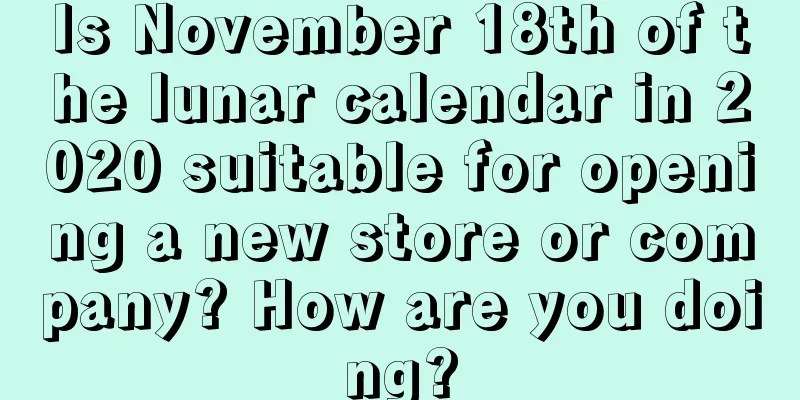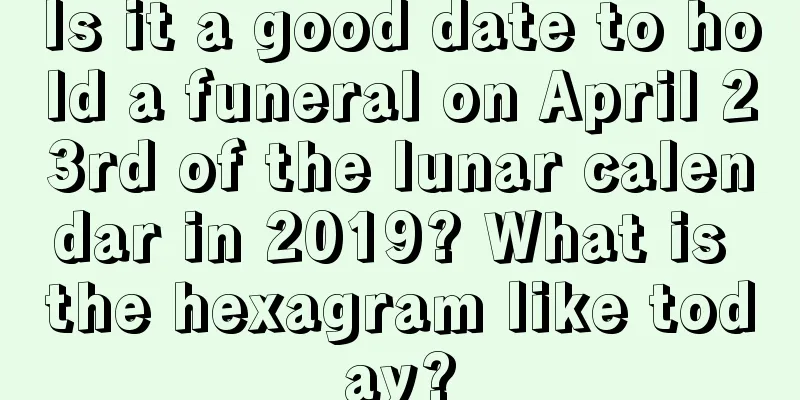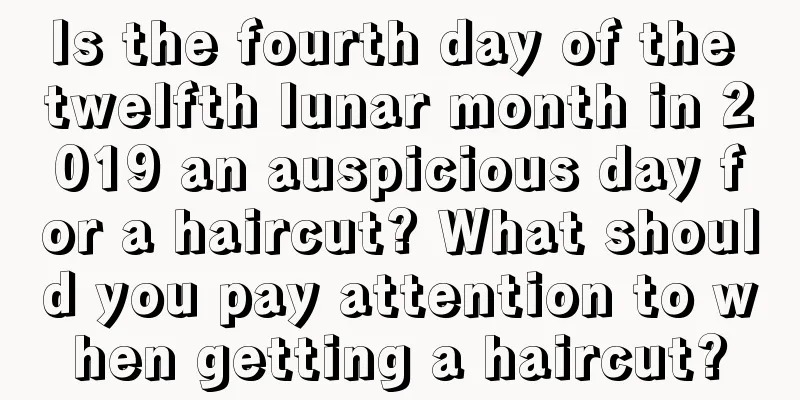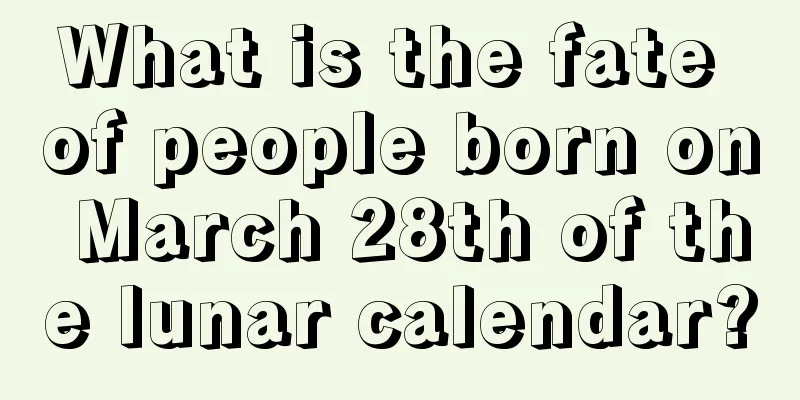Detailed explanation on how to correctly use the Feng Shui compass and the secret formula for opening the compass!
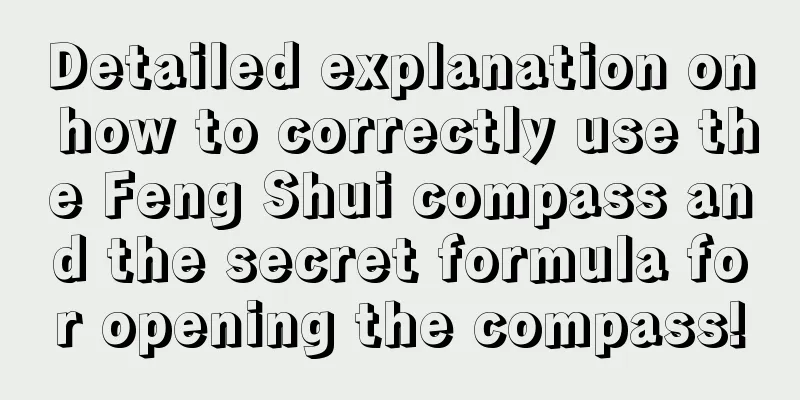
|
Introduction: Before the invention of the compass, ancient people used the stars to determine the direction. They determined the direction by observing the North Star at night and by the shadow of the sun during the day. Later, the compass was invented based on the compass! So how do we use the Kailuo Pan Tantric mantra correctly? Let’s find out together below! In order to facilitate everyone's reading and reference, Mr. Shui Mo has carefully sorted out many articles and topics related to the compass. Friends who want to know more can take a look. Chant this mantra before opening the compass, and you will not be afraid of Rahu, the killer of your teacher, taboos, or any other evil spirits. This mantra can be used in any situation that may cause anxiety. It can protect, defend, calm the mind, steady the heart, ward off evil and avoid evil. It is a bit like "Jiang Taigong is here, nothing is taboo"! You should recite more often and practice diligently in daily life. Before opening the Luo Pan, light three incense sticks in your heart and chant the mantra three times, then you can open the market with confidence! The mantra is as follows: Buzz! Agana, abana, matana, mahe! Mattanaye, all in! Chant this mantra before opening the compass, and you will not be afraid of Rahu, the killing of teachers, taboos, or any other evil spirits. It is not easy to come by, please cherish it. To judge the good or bad fortune of a grave, the "Twenty-Four Mountains, Sand and Water" method is still used. The difference is that a yang house can determine the fortune of parents, while a yin house cannot determine the fortune of parents. In addition, several commonly used methods of tomb-breaking are introduced as follows: 1. The tomb itself1. Trampled graves - If the graves in public cemeteries are trampled upon by people frequently, they will be in a state of destruction. This will cause the souls of the dead to be restless and they will be humiliated. It will also make it difficult for their descendants to make a name for themselves in society. They will often be bullied, have a low status, be driven by others, and will not be able to achieve anything in their lifetime.2. There are bones but no grave - because they were hastily buried during times of escape or hardship, without any proper burial or tree erected, the bones are lost in smoke over time and no one can identify or worship them. The souls of the dead are left wandering and helpless, and their descendants will also be homeless and uneasy, with setbacks in their careers, ups and downs, and failures along the way. 3. Pillars are inserted into the top of the tomb - some tomb builders insert bamboo and wooden pillars into other people's tombs in order to set up tents to provide protection from the sun and rain. The souls of the dead whose tombs are pierced by pillars feel as if their hearts are stabbed, and they sense that their descendants will suffer unexpected injuries or even be killed. Tomb builders must never seek temporary convenience and bring harm to others and create bad karma for themselves. 4. Flooding of graves - some graves are located in low-lying areas, and water accumulates after rain to soak the coffins; or because water is stored in the cemetery because of tombs built nearby; or because the graves are close to lakes or paddy fields, a rain will cause a disaster and the cemetery will be flooded. These situations will cause the deceased to catch cold, affecting their descendants, making them weak and afraid of cold, and causing them to suffer from rheumatism, phlegm, asthma, and colds. In severe cases, people may even die from drunkenness or drowning. 5. Crowded tombs - Most of the early tombs did not have outer walls and cemetery pools. As new tombs were built around them, they were squeezed or the cemeteries were occupied, making it difficult for the dead to breathe, causing instability in the homes of their descendants and leading to lawsuits over real estate. 6. Coffin boards and bricks are pressed on the tomb - the tombs in the public cemetery are adjacent to each other. If there is an old tomb nearby, it will be opened (to collect bones), rebuilt or renovated. If the discarded coffin boards, bricks, stones and cement blocks are pressed on the grave, the deceased's soul will be harmed, and the descendants will suffer a stroke or become bedridden; if they are randomly piled in front of the tomb, the descendants will suffer a stroke or become disabled; if they are piled at the back, the descendants will suffer head injuries or madness; if they are piled against the tomb wall, the deceased's soul will wail in pain and the descendants will have body ache. 7. Stolen graves: In the homes of the wealthy, there are abundant gold and silver burial objects, which attract thieves to rob the graves and coffins. The corpses are exposed, eaten by wild dogs, and the remains of the dead are destroyed, affecting their descendants, who are left dead on the road and their ancestors are exterminated. 8. Scattered bones - A newly buried grave in a remote cemetery was dug up by wild dogs, breaking the coffin and exposing the corpse. The wild dogs dragged the corpse to another cemetery and gnawed it, leaving broken bones scattered on the tomb, affecting the deceased's relationship with other dead souls. His descendants suffered career setbacks, were plagued by troubles, and were framed by bad people. 9. Collapse in front of the tomb - there is a landslide in the tomb, the tomb is tilted too much; or the tomb is built on the top of a mountain, and the wind is strong, making people feel unsteady and shaky. This is because there is no railing in front, and the deceased's soul will lean forward uncomfortably, causing his descendants to fall from a building, slip, or get into a car accident. 10. Piling up sand and gravel in front of tombs - Some construction workers often pile sand, gravel and cement in front of other people's graves, causing grief to the deceased in that tomb. Their descendants are prone to gastrointestinal diseases and stones. 11. Termites enter the tomb, and snakes and rats burrow into it - the place where wind blows and water disasters occur, and the tomb is formed by caves of dead trees, which attracts termites to enter the tomb and eat bones, or snakes and rats burrow into people and destroy the bones, causing the dead souls to be frightened, affecting the descendants to become hooligans and gangsters, fighting and killing each other, and causing deaths, injuries and imprisonment. 12. A grave on top of a grave - in ancient times, the tombstone was made of three stones, or words were engraved on bricks, and the tomb was covered with earth. Over time, the soil in the tomb was lost, and the bricks and stones were buried, forming a flat land. Because the cemetery is crowded and difficult to distinguish, new tombs are built on top of old tombs. Up and down like this, the dead are uneasy. My descendants will live in low status all their lives and will always be inferior to others. The descendants of those buried above will not be successful in their endeavors and will suffer from frequent troubles. 13. Tree roots penetrate the coffin and vines entangle the tombstone. If the grave is near trees with luxuriant roots such as maple, pine, fir, cypress, and banyan, the tree roots may easily penetrate the coffin and clamp the corpse (or grass roots may enter the urn); or vines may entangle the tombstone, making it difficult for the deceased to move forward, and their descendants may suffer from gastric bleeding, chest and flank pain, intellectual disability, dementia, and may commit crimes and go to jail. 14. Tomb walls without doors - tombs are built and walls are left without leaving doors, people can climb and cross them at will, the souls of the dead cannot circulate, and their descendants may be imprisoned. 15. Tomb courtyard water hole – drainage hole inside the tomb courtyard. It cannot be too big, otherwise the descendants will be poor, unable to accumulate wealth, suffer from diarrhea and enuresis. If the drainage hole is blocked by sand, gravel or grass, it will cause eye diseases, urinary tract diseases of descendants and menstrual diseases of women. 2. Stone Stele Interpretation MethodThe tombstone represents the face and vitality of the deceased, and also represents the existence of the deceased and its image standing tall in the world. "Qi" enters the grave through the tombstone and is then transmitted to the descendants of the deceased. During the Japanese occupation, poor families mostly used bricks with inscriptions on their tombstones, or used ordinary oval stones with relatively flat surfaces (without inscriptions) as tombstones.In recent years, with the development of industry and commerce and the improvement of people's income, various stones have been widely used as tombstones. Common types include Guanyin stone and Penghu stone; high-end types include star stone, Italian ruby, South African black, granite (Tangshan stone), etc. Due to the different composition, hardness and density of the stone, tombstones are affected by sunlight, wind, rain and humidity, which will produce various chemical reactions, resulting in color, water lines, corrosion, spots and other phenomena. We can infer the situation inside the tomb and its impact on the fortune or misfortune of future generations from the various phenomena revealed on the stone tablet. The best stone for the stele is one with high hardness, not easily weathered and eroded by rain, soft color, even and fine texture, and no impurities. In my experience, granite (Tangshan stone), which is beige with a slight red tint and has a uniform pattern, is the best stone. There should be no stains, peeling, cracks or corrosion on the tombstone and platform stone. If the above situation occurs, depending on where it occurs, you can determine the person and the disease. Light, humidity, rainfall and wind direction are important factors that affect the stele. 3. Judging by the phenomenon on the surface of the stele1. If the stone of the stele weathers and peels off, the inscription becomes blurred, or moss grows to cover the words, it is like the dead soul becoming blind, and his descendants will suffer from eye diseases.2. Red stone tablet. Since red light represents violence, if the color of red is not good (dark), it is easy to cause conflicts between father and son, family separation, and sexual disputes. If the red color is bright, it means there is joy in the home. Black light represents mystery, sadness, and sin. If the black color is gray and dull, it will lead to the decline of family fortune. 3. Some tombstones will also show various faint patterns, such as dragon patterns, money patterns, Ganoderma lucidum patterns, Ruyi patterns and other auspicious symbols. This must be a place where a true dragon's lair is buried. It must be very old, have strong aura, and is very rare. 4. How to judge the surrounding situationThe situation and topography around the tomb will also affect the tombstone, coffin, and golden urn, thus affecting the descendants of the deceased. According to the author's experience, a good terrain is one in which the dragon comes neither too fast nor too slow, the star of the cave is straight, the soil is yellow and moist, the boundaries of water channels are clearly divided (good drainage), and the tomb is properly built (including shape, materials, colors, methods of making golden wells, depth of burial, quality and method of piling soil, types and planting methods of grave grass); a good situation is that the hall in front of the tomb is flat and straight, and the height and distance of the front and table are appropriate (there is no feeling of oppression). The hills on the left and right sides (including buildings and ground objects) are similar in size and height to the cave site. As for the undesirable situation and terrain, the impacts are as follows:1. Chaoshan has a "broken head" due to excavation and collapse, which means the official will suffer a sudden disaster. 2. The mountain is so high and pressing that the owner of the house is exterminated. It is most inauspicious to bury someone facing the opposite direction of the vein. 3. Flee to the foot of the mountain, and it will be difficult to make a living on the farm. 4. If the mountain is rugged, with broken cliffs and rough surfaces, there will be many misfortunes in the family. 5. If you lean sideways or stick your head out towards the mountain, there will be bandits in your home. 6. They open their legs to offer flowers to the mountain, lift their skirts and dance with their sleeves (the ridges of the mountain are undulating and flying like the wind blowing a skirt, revealing the spring scenery), and indulge in lust. 7. The sand corner opposite is sharp, which will bring you unexpected disasters and sufferings. 5. Position Interpretation1. Tombs located on mountain tops or ridges are often shaded by corpses and flooded. The family's assets will decline and the heirs will suffer major misfortunes.2. Graves under big trees or in dense forests will have their tombstones blocked by the shadows of the trees, and sunlight will not shine through, causing moss to grow on the tombstones. The tombstones will become gloomy and dark, causing the family fortunes to gradually decline and giving rise to people with epilepsy or schizophrenia. The roots of some trees, such as pine, fir, maple, etc., will extend and grow. If the roots invade the tomb, entwine and penetrate the bones, it will affect the descendants and cause headaches, muscle and bone pain, blindness, and even give birth to children and grandchildren with rickets and intellectual disabilities. The gloomy and dark environment will cause children and grandchildren to suffer from rheumatism, the house to be haunted and other obscure things. I have witnessed many examples of this, and I would like to advise everyone to choose a cemetery in a place with sufficient sunlight. 3. For a grave located under a high-voltage power line, even if the situation is good, the family will decline and even become poor after ten years when the Yuan Dynasty is in good luck. Opposite high plugging method 1. Plug it straight in the front, wrap it with big grass roots on the outside, and insert small grass roots inside. It is mainly used to cure women, eye diseases, and dizziness. 2. There is a mountain or building in front of the tomb, which is pressing down on it and buries it in the ground. Wives and daughters often suffer from foot and lower body diseases. Or sand enters the coffin or jar from the back, and the back becomes damp and gradually rots. When put into water, the bones are entangled with hyphae or grass roots like a net. The whole family of the master will suffer from dizziness, swelling, women will have uterine tumors, and body aches. 3. If the front is blocked by the wall of another tomb or is shot at by a corner, it means that the skin on the tombstone will be peeled off, there will be foot pain and eye disease. It is common to see new graves built in front of old graves in cemeteries. Most of the old graves are low and small. If the new grave is high and large, it will form a high blockage, causing disasters to people. We advise geomancers and grave builders (feng shui masters) to accumulate more good deeds and consider the “neighbors” when building new graves. Do not harm the “indigenous people”, only then will there be blessings. 4. The burial site is in a volcanic area or fault zone. Since the terrain is prone to change (mountains or land moving), coffins and gold urns may be overturned or moved away (commonly known as swallowing the coffin, swallowing the gold, or moving the coffin or gold away). 5. Buried in a broken mountain (the last section of the dragon is about thirty feet long, and if it is broken due to digging or collapse), the corpse will be mostly shaded. 6. How to diagnose termites1. If there are big mountains and little water but no dragon caves, termites will definitely be born.2. If there is a small mountain and a lot of water but no dragon's lair, there must be a spring. There were herbs growing all around the grave, but none on it, and the coffin was full of termites. 3. If ants are born on a hard and solid ground after burial, it means that although the dragon is real, the cave has not been found. 7. Look at the paper money on the grave to see if it is good or bad. Grey color means yellow is for a man and white is for a woman. Red and yellow colors mean more blessings. Gray and black will definitely lead to the ruin of the family business, and green and blue will indicate a water hole. The red and black are mixed together, and gold and stone are strong; but the descendants are weak and cannot be pitied. Yellow and white color lead to wealth and honor, while black and white color lead to the ruin of the family business. 8. Pulling out weeds to separate men and womenPull out the weeds on the grave. The ones with straight and hard roots are male, and the ones with curved and soft roots are female. The old ones are the graves of the elderly, and the young ones are the graves of young people.9. Method of judging the vital energy point:1. Whenever a golden well is dug, a hole will be found, and when a candle is put in, it will be extinguished. This is called a wind tunnel. Put it in a candle hole and try it. If there is wind, the candle will go out. If there is no wind, the candle will be bright. If the cave is small, light incense and put it into the cave. If there is wind, smoke will come out; if there is no wind, smoke will not come out. If there is wind, it is a wind tunnel and must not be used for burial. If there is no wind, it is a lively cave, or if the roots of a large tree are rotten, it is suitable for burial.2. Dig a hole in the chosen location in advance, one foot and two inches square and as deep as possible. Crush and sift the excavated soil, then fill it back into the pit, making it level with the pit mouth. Do not compact it. Observe the next morning. If the soil in the pit is arched, it means that the vitality is strong and the burial is auspicious. If the soil in the pit is sunken, it means that the vitality is weak and the burial is inauspicious. Summary: The above is a detailed explanation of the secret formula of Kailuo Pan! Everyone can find out! The compass is not only a tool for measuring Feng Shui, but can also be used as a Feng Shui ornament to increase luck and ward off evil! |
<<: Detailed explanation on how to use the compass for Feng Shui in a bungalow!
>>: Analyze a series of Feng Shui problems shown on the compass!
Recommend
Why did the traditional Chinese Valentine’s Day become Valentine’s Day? Is there a holiday for Chinese Valentine's Day in 2020?
The Chinese Valentine's Day is clearly the Qix...
What are the do’s and don’ts for Qingming Festival in 2018? What are the taboos during the Qingming Festival?
Qingming Festival is one of my country's tradi...
Is it possible to travel on September 24th of the lunar calendar in 2017?
In the ninth month of the lunar calendar, the mapl...
Who are the famous people who were born during the Chinese New Year?
The world’s current development is inseparable fro...
What gifts are good for Mid-Autumn Festival? Can we visit relatives and friends during Mid-Autumn Festival in 2020?
Introduction: Giving gifts during the Mid-Autumn F...
What are the do's and don'ts on April 18th of the lunar calendar in 2019?
April is the most beautiful month in the world. A...
Is it a pure Yin fate for people born on Bailu in 2020? What constellation is it for people born on Bailu in 2020?
Introduction: New life is born into this world eve...
A detailed explanation of the auspiciousness and inauspiciousness of the time of the Minor Cold (2021.1.5) in the lunar calendar of 2020!
The ancients' study of Bazi mainly focused on ...
Query of auspiciousness and inauspiciousness of the 52 hours of the fifth lunar month in 2020
Check the auspiciousness and inauspiciousness of ...
When is Labor Day in 2022? Is May Day an auspicious day?
May 1st Labor Day is International Labor Day. Is M...
Is July 20, 2020, an auspicious day for Bailu? What is the sentence before Bailu has not yet dried?
Introduction: The days of Bailu can also be auspic...
Is the sixth day of the second lunar month in 2018 suitable for funerals?
In a person's life, there will always be birth...
The first day of the fifth lunar month in 2018 is a good day, according to the lunar calendar.
The fifth month of the lunar calendar is a time w...
Is August 23rd of the lunar calendar 2017 a good day? Is it a good day to pray?
Introduction: Burning incense and praying for bles...
What zodiac sign is the fifth day of the eighth lunar month in 2021? What is the hexagram for today?
In mid-autumn August, sweet osmanthus flowers are ...
